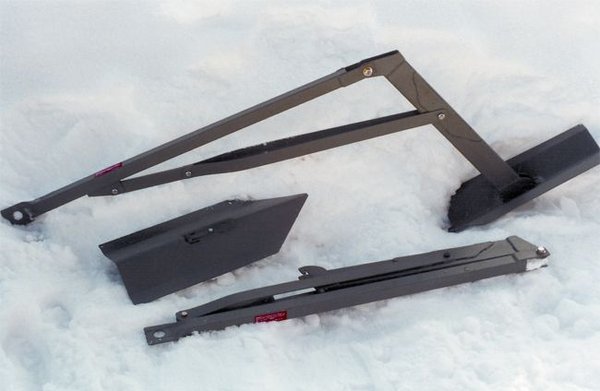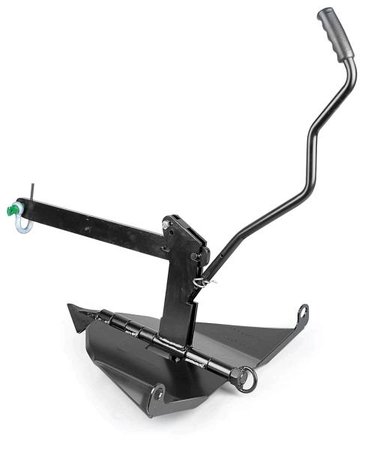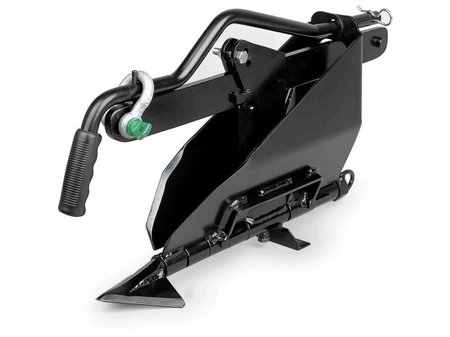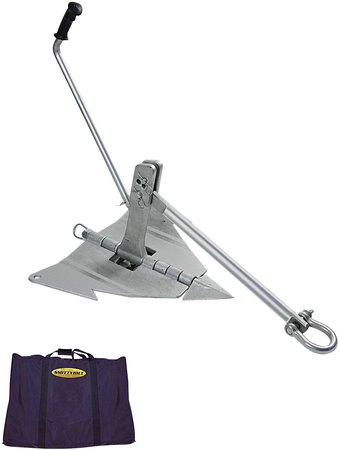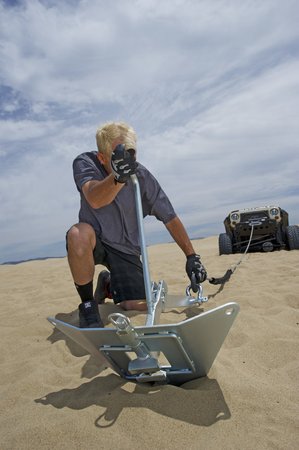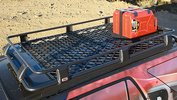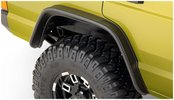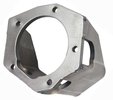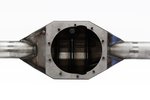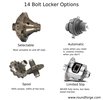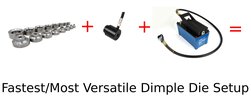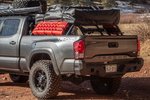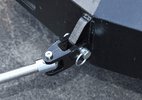Winch Anchors for When There's Not a Tree in Sight
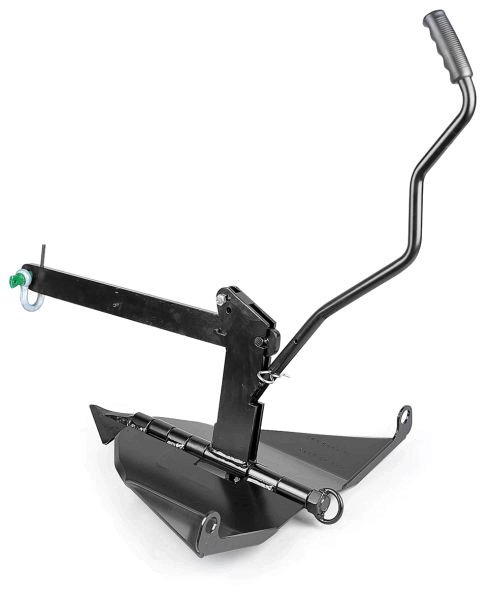
- The Winch Recovery Kit Comparison Guide
- Why You Shouldn't Use Chain for Off Road Recovery
- Recovery Dampers for Winching and Snatching
Or maybe you're gradually exploring abandoned mining towns for a week at a time while living out of the back of your pickup. You might be burying bodies for the mob in Las Vegas (we don't judge), the boss won't spring for larger tires, and you're sick of calling for help in sandy washes. In remote areas in the United States, it's possible to go days at a time without seeing other people. Even in the east, there are plenty of places where getting stuck would be a big, big problem.
Many of us have been wheeling for years. We know what parts and tools we need and we can cobble something together to get us back to civilization if we break down. But though we bring winches, one thing we often don't always have is something to attach it to. In the desert, trees and rocks can be too far for a winch cable or winch extension strap to reach. Mud flats and sand dunes usually have no trees to hook up to. Even wooded areas can be devoid of winch anchors if the area has too much new growth or has been recently logged.
How do we fix this? We make our own winch anchor.
You have two options to make a winch anchor: an easy-to-use commercial winch anchor or a deadman anchor, where you bury a tire or a log. Either can make a suitable land anchor in sand or mud, although there is a considerable amount of effort required with the deadman.
Commercial Winch Anchors
Fill out your recovery gear! If you have a Hi-Lift, a winch, and a winch recovery kit, you might want to turn your attention to a land anchor for your winch. While you might be relying on trees and rocks as winch points, a portable ground anchor setup coupled with your winch setup will make your 4x4 like a self-contained recovery unit.
There are only three companies making winch anchors in the US right now. They each use a somewhat similar design where there is a plow that is pulled down into the ground to make the anchor fast. Should you get one? It depends on where you wheel, how long you go out for, and what your recovery options are.
If you're tooling along in State or National Forest in Virginia, a winch line and winch extension strap will likely be all you ever need. If you go muddin' in big, wide, open fields in Alabama, an anchor might come in handy. If you cruise Arizona desert trails with your family where there are few trees, a winch anchor will be another piece of insurance that you won't be stuck in the middle of nowhere without water.
Get a winch anchor if you wheel without other vehicles and getting stranded will be a serious problem.
Commercial winch anchors are great because of their ease of use. You set the point of the plow into the ground, then reel in your winch line. The anchor will travel down into the ground and towards your rig until the spade bites and secures itself. While you may have to do a little digging to set it, it's nothing like the effort to set up a deadman anchor. They fold up somewhat compactly.
Besides easy deployment, you get to place the anchor exactly where you want it. Lots of winch pulls end up off to the side or a little high or low. With an anchor you can get a fairly centered pull since you'll get to choose the site. You can also position the anchor so that the winch will be able to generate the most pulling force. This means reeling the cable out until you have a single row of wraps on the drum - this is where the winch has the most power. The more cable you have on the drum, the further the winch line is from the drum's turn axis. This can result in up to a 20% loss in strength.
You can also use more than one anchor at once. If you and a wheeling buddy both have Pull-Pals, you can link them to create a double winch anchor that can take even more weight. This is useful for very heavy vehicles and could be helpful in certain conditions.
Of course commercial winch anchors aren't perfect.
They tend to be on the expensive side, probably because they're designed to hold thousands of pounds. There is a lot of product liability that goes along with designing something that will kill people if it breaks.
The ground needs to be right to use them. Too hard, like rock or ground that's frozen solid and the anchor can't penetrate. Of course, if the anchor can't penetrate, you probably won't be able to dig through it anyway. Certain types of soft ground sometimes also don't work. We suspect this has something to do with setup or positioning in some cases since winch ground anchors like the Pull-Pal are well known for working in sand and snow.
Pull-Pal - THE ORIGINAL WINCH ANCHOR
Pull-Pals are the most well-known land anchors and have been used by the military, jungle expeditions, and by plain folk that just don't want to die of thirst in the desert.
The most well known winch anchor manufacturer is Pull-Pal. They've been around the longest and also have several models available to work with vehicles up to 12,000 lbs.
All Pull-Pals use chromoly for the plow assembly, have welded construction, and use Grade 8 hardware. Considering the deployed size, they fold down fairly compactly to a flat package. The smallest version folds down to 32" x 7" and only weighs 21 lbs. The largest folds to 45" x 7" and weighs 49 lbs. That's actually pretty close to the dimensions of a Hi-Lift Jack!
There are mounts available to attach Pull-Pals to square or round tube bumpers.
The back of a Pull-Pal has an extra hole where you can attach a shackle and a strap or chain. If your Pull-Pal gets seriously buried while winching, you can use the strap to slowly pull the anchor out backwards.
Pull-Pals have a great reputation, but that doesn't mean they work in every recovery situation.
Pull-Pals are used by the military, construction companies, farmers, and lots of other professions that need a remote winch anchor in an anchor-less area. They've been used around the world for tasks like moving buildings, securing equipment in place, and crossing jungles and deserts. They aren't just for off-road. Pull-Pals are one piece of recovery gear that have proven themselves over and over again.
There are four models of Pull-Pal to anchor vehicles of just about any weight. For some crazy reason, the model numbers look like weight ratings, yet they don't correlate to the actual rated capacity of each Pull-Pal model. We included the weight rating, dimensions, and carry weight on each. You might notice that there are only two different spade/plow sizes. The strength increases between the models has a lot to do with beefing up the non-spade parts of the Pull-Pal.
| Max Gross Vehicle Weight | 3000 lbs. |
|---|---|
| Carry Weight | 21 lbs. |
| Folded Dimensions | 32" x 7" |
| Spade Size | 10" x 24" |
Pull-Pal RW6000
This Pull-Pal is ideal for ATVs, snowmobiles, side-by-sides, sand buggies, and Suzuki Samurais. It'll provide a sturdy winch anchor for vehicles up to 3,000 lbs. gross vehicle weight.
| Max Gross Vehicle Weight | 6000 lbs. |
|---|---|
| Carry Weight | 35 lbs. |
| Folded Dimensions | 45" x 7" |
| Spade Size | 10" x 24" |
Pull-Pal RW11000
Perfect for your Jeep, Tacoma, Land Cruiser, or other mid-sized trucks and SUVs. This winch anchor can hold up to vehicles with a gross vehicle weight of 6000 lbs. or less.
| Max Gross Vehicle Weight | 10,000 lbs. |
|---|---|
| Carry Weight | 42 lbs. |
| Folded Dimensions | 45" x 7" |
| Spade Size | 14" x 24" |
Pull-Pal RW14000
If you have a big truck, this is the anchor for you! This is designed to be anchor for Suburbans, Excursions, Hummers, and heavy full-size pickups. This anchor will hold up in the mud against vehicles that are 10,000 lbs. and less.
| Max Gross Vehicle Weight | 12,000 lbs. |
|---|---|
| Carry Weight | 49 lbs. |
| Folded Dimensions | 45" x 9" |
| Spade Size | 18" x 24" |
Pull-Pal RW16000
This ultra-heavy duty winch anchor is meant for seriously heavy vehicles. It can support vehicles up to 12,000 lbs. This should cover most large, well-equipped expedition rigs and lots of commercial vehicles that need to travel off road with heavy equipment. The detachable spade wings keep the package almost as small as the RW14000.
ARB Portable Ground Anchor - THE SAND LAND ANCHOR FROM THE LAND OF SAND
At 31 pounds, this is a pretty light land anchor. It's used by emergency services in Australia.
The ARB land anchor folds up to a compact size for carrying and storage.
Australia, where ARB is based, has plenty of sand and scrub but not as many trees that can provide a good winch anchor. ARB's portable ground anchor is similar to a Pull-Pal, but folds up into an even smaller package. Many of Australia's emergency service units use the ARB land anchor. ARB has an excellent reputation regarding recovery gear, but we haven't seen a lot of use of this particular anchor like we have with the Pull-Pal. It folds up compactly and weighs 31 lbs.
Smittybilt W.A.S.P. Winch Anchor Support Platform - THE LOW BUDGET LAND ANCHOR
The Smittybilt is veeeery similar to the ARB.
We've heard good things about sand performance.
So, here we are again with Smittybilt. Hmmmmm. The Smittybilt ground anchor appears to be a clone of the ARB ground anchor. However, there are mixed reviews about it. It is definitely the cheapest ground anchor we've seen, but it isn't the best. It tends to plow during deployment. While this can be a problem with other land anchors we think it's more likely that whoever designed it messed up some angles and lengths.
In typical Smittybilt fashion, the instruction manual has some comical Chinese-to-English translations that will tell you that, again, whoever was in charge of this project at Smittybilt wasn't paying much attention. It might be interesting in the future to take one of these units and try to tweak it to make it work correctly. Hmmmmm.
If you must:
The Deadman - JUST HOPE YOU NEVER HAVE TO DO THIS
Ah, the deadman anchor. Quite simply, you bury a log, rock, or your spare tire, attach your winch line to it, and winch out. It sounds so simple, right? Hopefully you're in good shape and ready to roll up your sleeves. Here's why:
Soft ground is easy to dig but doesn't hold the anchor and needs to be deeper.
Hard ground will hold an anchor with a shallower hole but is hard to dig.
A makeshift deadman anchor should be a last resort. Look, a lot of us get lazy and we're willing to spool out the cable or get out the strap to make obstacles easier or to not hold up others on a trail ride. While this is okay in a group, this will erode your skills for when your on the trail alone. Take a long look at your situation before digging a hole for a deadman winch anchor because you're going to be committing to a serious act of labor.
Can you stack some rocks differently? Can you reverse and pick a different line? Can you air down more? Can you do some minor digging to make an easier path? Can you jack up your tires and stack some rocks under them? Any of these options will be easier than digging a hole for a deadman.
How to Do a Deadman Winch Anchor
First, dig a hole. This might sound comically easy, but if you're prepping for a trip where you may need a deadman, consider what the ground is like. How deep should your hole be? Who knows. It depends on how soft the ground is and how much it holds together. Here are some things to think about.
Realistically, if you're stuck so badly that you need to do this, you're probably looking at 3 hours minimum to get out. You'll need to figure some things out and you might be digging and redigging your hole. Some holes are going to have a lot of roots and rocks.... On the upper end, we think a recovery like this could easily take 8-10 hours for a heavy rig in bad conditions.
You'll definitely need a shovel, and not one of those folding military shovels! If the ground is hard where you're going a pickaxe might be nice.
You should dig a trench for the winch cable to run through. Otherwise, especially with hard ground, the winch cable will rest on the top edge of your hole and pull the anchor straight up.
A typical yard of topsoil weighs around 1 ton. To visualize that amount of soil, imagine a square hole that would almost fit three stacked 36" x 12.5" Swampers. If you wanted to bury a 36" Swamper underneath that it would be another 12.5" or so. All that said, you probably don't need to dig down 4' to start. This is because the tire will push against the wall of the hole.
The anchor will push against the wall of the hole. Try not to slope the sides of your hole or your anchor will just slide out.
Being buried in and abraded by dirt will kill your synthetic winch line. Okay, maybe not today, but it won't do it any good.
A buried anchor will angle your winch line down. This means that the angle of pull will also be down toward the ground. You can combat this by spooling out as much line as possible to lessen the winch line's angle with the ground. You can also run the winch line up and over something else like a rock or a log to try and get your winch line up.
If you're in a serious mudhole, you'll probably need to dig out in front of at least your front tires. Otherwise, if the winch cable is angled down you'll have a hard time getting your rig to move forward.
If you want to use your spare tire as a deadman, you'll be sorry if it's mounted under your rig. Reason #78 why we like swingout tire carriers.
Should I use stakes?
Hammering a line of stakes into the ground and anchoring them to each other used to be one of the recommended anchoring methods but we've never seen it in the wild.
People do use them, but you need to know how.
There are a few things about it that are unappealing. First, you need to have a bunch of 30-40" metal stakes in your rig plus short chokers to attach the top of each stake to the bottom of the stake behind it. They take up a lot of space, weigh a lot, and have no other purpose. If you only need a standalone anchor once in a while it's better to use your spare tire.
Secondly, they have varying effectiveness. In really hard or frozen ground you might get away with one or two stakes. But in soft ground or sand, they aren't likely to hold. In fact, you can see this with camping stakes - in snow and sand you often need to use a rock, log, or mini-deadman to tie your tent out.
If you want to go with stakes, you should train with them in to see how they'll hold in your local dirt. While stakes probably won't be quite as labor-intensive to set up as a deadman, hammering them in an pulling them out will still require a lot of steps.
Last updated: September 5, 2019
